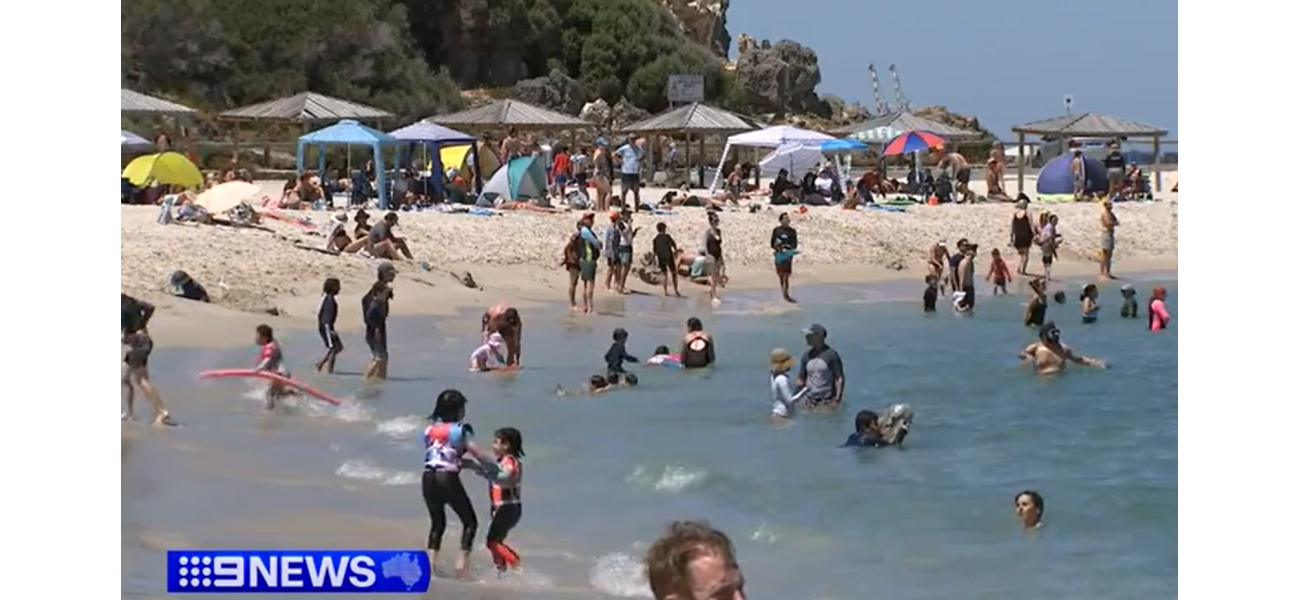A significant population milestone for Australia's fastest-growing state has been reached.
One state in Australia has the fastest population growth rate, with one person added every six minutes and eight seconds according to the Australian Bureau of Statistics.
October 24th 2024.

After the latest release of figures by the Australian Bureau of Statistics, it has been announced that Western Australia has earned the title of the fastest-growing state in the country. This is a result of the state hitting a population milestone of 3 million residents in the last 24 hours. The main factor contributing to this growth was immigration, with net overseas migration making up for almost 75% of the total increase.
One can't help but wonder what attracts people to Western Australia. For David and Gemma Hanrahan, it was the sunny days and outdoor lifestyle that drew them from the UK to make the move with their daughter just 10 weeks ago. Mrs Hanrahan shared with 9News that the opportunities available for their daughter and the enjoyable experiences they have had during their short time in the state were well worth the sacrifice. They specifically chose to settle in Carramar, located in Perth's north-west, as it offered the perfect mix of open outdoor spaces and family-friendly activities.
According to the ABS population clock, Western Australia's population grows by one person every six minutes and eight seconds. This growth is not solely driven by immigration, as there is also a birth every 16 minutes and 44 seconds. However, despite the population boom, the state's birth rate is currently at its lowest in two decades. This is evident by the 6% decrease in the number of babies born last year compared to four years ago. On the other hand, there is also one death every 29 minutes and 43 seconds, and a resident leaves to live overseas every 14 minutes and 33 seconds.
It's hard to believe that Western Australia wasn't always this bustling with activity. The state's population was first recorded in 1829, during a mining boom that saw many gold-hungry individuals flocking to the shores of Australia's west. The next significant increase in population was around World War II, with the state reaching 300,000 residents by 1949. Since then, there has been a steady increase, with the state hitting 2 million people in 2005 and now adding another million in less than 20 years.
This recent population boom has sparked concerns about the state's infrastructure and its ability to handle the increase. Premier Roger Cook has expressed a desire to follow in Queensland's footsteps and transform more regional towns into small cities and hubs to accommodate the influx of residents. Other states in Australia have also experienced growth, with Victoria coming in second place with a 2.7% increase in population, followed by Queensland with 2.5%, and New South Wales with 2%. The Northern Territory, on the other hand, saw a 0.8% rise due to births, while the Australian Capital Territory, South Australia, and Tasmania had population increases of 1.8%, 1.5%, and 0.4%, respectively.
Overall, Australia's total population has increased by 2.3% to over 27 million. With Western Australia leading the way, it's clear that the state is an attractive destination for many individuals and families. Only time will tell if the state's infrastructure and resources can keep up with the rapid growth, but for now, Western Australia remains a popular and thriving state for those looking for a new place to call home.
One can't help but wonder what attracts people to Western Australia. For David and Gemma Hanrahan, it was the sunny days and outdoor lifestyle that drew them from the UK to make the move with their daughter just 10 weeks ago. Mrs Hanrahan shared with 9News that the opportunities available for their daughter and the enjoyable experiences they have had during their short time in the state were well worth the sacrifice. They specifically chose to settle in Carramar, located in Perth's north-west, as it offered the perfect mix of open outdoor spaces and family-friendly activities.
According to the ABS population clock, Western Australia's population grows by one person every six minutes and eight seconds. This growth is not solely driven by immigration, as there is also a birth every 16 minutes and 44 seconds. However, despite the population boom, the state's birth rate is currently at its lowest in two decades. This is evident by the 6% decrease in the number of babies born last year compared to four years ago. On the other hand, there is also one death every 29 minutes and 43 seconds, and a resident leaves to live overseas every 14 minutes and 33 seconds.
It's hard to believe that Western Australia wasn't always this bustling with activity. The state's population was first recorded in 1829, during a mining boom that saw many gold-hungry individuals flocking to the shores of Australia's west. The next significant increase in population was around World War II, with the state reaching 300,000 residents by 1949. Since then, there has been a steady increase, with the state hitting 2 million people in 2005 and now adding another million in less than 20 years.
This recent population boom has sparked concerns about the state's infrastructure and its ability to handle the increase. Premier Roger Cook has expressed a desire to follow in Queensland's footsteps and transform more regional towns into small cities and hubs to accommodate the influx of residents. Other states in Australia have also experienced growth, with Victoria coming in second place with a 2.7% increase in population, followed by Queensland with 2.5%, and New South Wales with 2%. The Northern Territory, on the other hand, saw a 0.8% rise due to births, while the Australian Capital Territory, South Australia, and Tasmania had population increases of 1.8%, 1.5%, and 0.4%, respectively.
Overall, Australia's total population has increased by 2.3% to over 27 million. With Western Australia leading the way, it's clear that the state is an attractive destination for many individuals and families. Only time will tell if the state's infrastructure and resources can keep up with the rapid growth, but for now, Western Australia remains a popular and thriving state for those looking for a new place to call home.
[This article has been trending online recently and has been generated with AI. Your feed is customized.]
[Generative AI is experimental.]
0
0
Submit Comment





